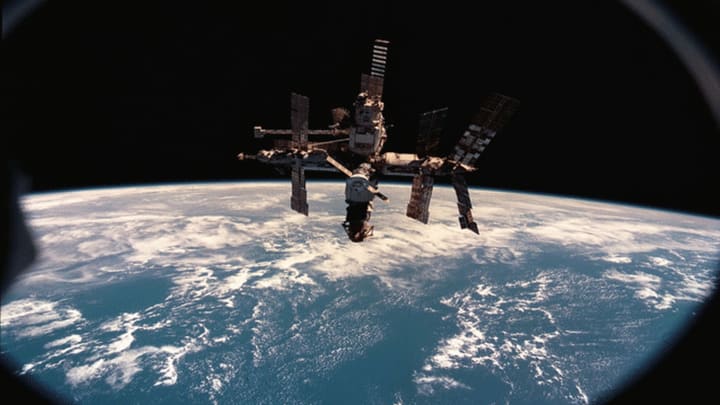For centuries, burial at sea has been a common practice across cultural lines. It can be done out of necessity, for religious reasons, or because humans feel that the best way to get rid of something is by dumping it in the ocean. And this isn’t just true for organic matter; we’ve been known to do it with 143-ton hunks of space junk as well.
In the South Pacific, 2500 miles off the New Zealand coast, lies a patch of sea that is home to decades worth of space history. The South Pacific Ocean Uninhabited Area, playfully known as the "Spacecraft Cemetery,” has become a favorite place for space programs to crash land their defunct satellites. Thousands of miles of open ocean separate the spot from any islands or human life. Its neighbor is the lonely Point Nemo—named for the Jules Verne character—that's farther from land than any other spot on Earth.
There are 161 spacecrafts that have made this stretch of sea their final resting place. Among them are several resupply vehicles that serviced the International Space Station, four of Japan’s HTV cargo crafts, and Russia’s massive Mir space station. You may suspect the area’s ocean floor to look like an otherworldly Air & Space museum, but the spacecraft there are all but unrecognizable. The majority of a spacecraft's mass will burn up during reentry, meaning that all that’s left when it hits the ocean are some charred pieces of scrap metal.
In addition to the Spacecraft Cemetery, there’s an alternate destination for unwanted vehicles that’s even further removed from life on earth. By blasting a satellite away from the planet and into a more remote orbit, it becomes part of what’s called a “graveyard orbit.” This is often preferable as it requires less fuel than bringing it back to earth, but it's a temporary solution that adds to a growing problem.
The space junk orbiting Earth accumulates with each passing year. And while dumping spacecraft in the ocean may not seem environmentally friendly, the atmosphere significantly reduces the junk matter before it ever reaches the ocean. So may the Spacecraft Cemetery live on, both in reality and in our cosmic nightmares.
[h/t: Gizmodo]
